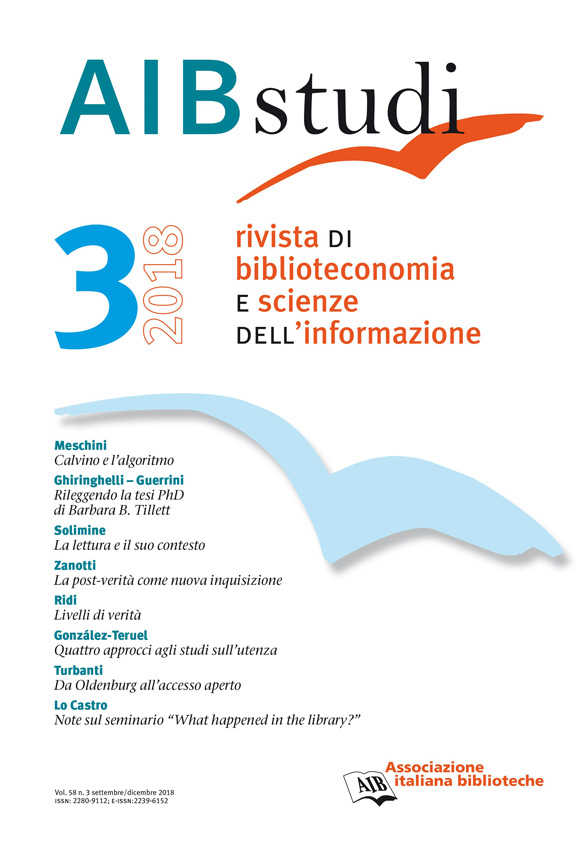Reading and its context: a wide-angled data analysis
DOI:
https://doi.org/10.2426/aibstudi-11886Keywords:
reading, statistics, methods for data analysis and interpretationAbstract
The paper aims at focusing on some interpretative issues cropping up whenever data on reading are analysed. In particular, examples are given of the various conclusions that can be drawn when a point-by-point, disaggregate analysis of statistical data is carried our, or, alternatively, when their examination is repeated after some time, or when long-term tendencies are gleaned from the analysis of the historical series. Likewise, we could observe an issue in detail, or try and widen our view to focus on the specific situation as a whole in order to put it in context, while trying to ascertain relationships, to trace the casual connections or the influential aspects.
The methodologies adopted by ISTAT (The Italian National Institute for Statistics) in the past half century must be put in perspective, in order to understand the motives behind them and the rationale of both questions and answers. Moreover, this way it is possible to see the connections between reading habits and the evolution of the Italian society, thus achieving an overall view of the cultural involvement in our country.
We are facing innovatios that radically modify the phenomena we would like to analyse, whose study requires new investigation tools. The old quantitative methods are by now inadequate, while we still little and poorly use qualitative methods and the tools that the web makes available to us, because we have not yet gained enough sound experience to put them into practice.
Downloads
Downloads
Published
How to Cite
Issue
Section
License
Copyright (c) 2019 AIB studi

This work is licensed under a Creative Commons Attribution-ShareAlike 4.0 International License.









